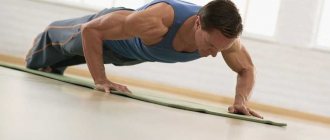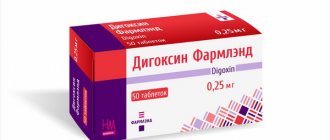VSD and sports: physical activity for vegetative-vascular dystonia
Have you ever suddenly felt like you were going to faint when you were doing too much physical activity? Suddenly you turn pale, break out in a cold sweat, and your vision becomes dark. However, the situation may develop in a different scenario: a sharp increase in blood pressure, redness of the skin, dilation of the pupils. Some may even experience panic attacks.
Vegetative-vascular dystonia is a complex of functional disorders based on dysregulation of vascular tone of the autonomic nervous system. When such conditions occur, you need to stop any physical activity and even if you have not been sick before, consult a doctor.
VSD and sports are compatible, but in the right quantities and as prescribed by a specialist.
Description of the disease
VSD, according to modern medicine, is observed in 70% of the population, but only a third of these cases require therapeutic or neurological assistance.
The first symptoms of vegetative-vascular dystonia most often occur in childhood or adolescence, fully manifesting themselves by the age of 20-40. According to statistics, the fair sex is susceptible to VSD three times more often than men.
Today, medicine does not consider VSD as an independent disease, because, in fact, all its manifestations are symptoms that develop against the background of organic pathology.
So, you have undergone examinations, taken an electrocardiogram, and the doctors say that you have VSD - the question arises, what to do? Yes, this functional disorder significantly impairs the quality of life. But you need not to panic and try to live your best life, following the doctor’s recommendations. Let's try to figure it out, you can lick sports with VSD.
Important! This article will not help you accurately determine whether you suffer from VSD. Only a doctor has the right to make a correct diagnosis. Self-medication is contraindicated and even dangerous.
Physical activity for VSD
Vegetative-vascular dystonia and sports are completely compatible concepts, although it is still not advisable to engage in some sports.
Doctors are also wary of recommendations to continue professional sports training with VSD. But moderate physical activity is even welcome, because it increases the effectiveness of therapy.
Let's take a closer look at which sports are not dangerous for VSD, and which sports activities should be continued with caution.
With VSD, running, swimming, step aerobics, morning exercises, yoga, and badminton are among the sports that are allowed.
Martial arts, weightlifting, powerlifting, arm wrestling, kettlebell lifting, bodybuilding, discus throwing are on the black list for the diagnosis of VSD.
Chess is also prohibited for people with VSD. The whole point here is not physical, but emotional stress. In addition, a chess player can sit in one position for hours. A surge of emotions against the background of a lack of muscle load can lead to a hypertensive crisis during VSD.
If you have vascular dystonia and you are going to the gym, here is what you need to remember. The entire lifestyle is of great importance: with VSD, you need a correct daily routine, including at least seven hours of sleep and good nutrition.
However, do not control them manically, otherwise you will develop neurosis and the effect of the stress will decrease.
Recommendations for playing sports with VSD:
- Do not perform exercises while being “upside down”;
- Deadlift is prohibited because it is dangerous for blood vessels;
- To avoid strain, do not overheat;
- If your health worsens, stop training;
- No violence to the body, let playing sports make you happy.
Best Sports Workouts
Let's take a closer look at what sports are recommended for VSD.
The best form of physical activity for VSD is running. It uses more than 80% of the muscles, the whole body works. All its systems and internal organs are better supplied with oxygen. If you approach the process correctly, think through a plan for regular training to run, gradually increasing the load, you can easily reduce the symptoms of VSD.
This is because with a gradual increase in loads, the heart muscle will slowly learn to pump a larger volume of blood. The functioning of the brain will also improve, which will begin to receive more oxygen, thought processes will accelerate, and the consequences of neurosis, psychosis and depression will go away.
All this will help you more easily survive stress during VSD. With all its advantages, running has one more huge advantage - it is the most accessible sport and in order to practice it, you do not need subscriptions to expensive gyms or expensive equipment.
All you need is sneakers and a desire to play sports.
Fitness is an effective way to maintain good physical shape. It represents a set of measures that will help strengthen all muscle groups, the immune and cardiovascular systems, lose weight, and maintain tone. With the help of fitness, you will become more resilient, strong and flexible, rejuvenate your body, and forget about stress and irritability. With the help of fitness, you can also reduce the symptoms of VSD.
Horseback riding, cycling and skiing
Equestrian sports and cycling also have no restrictions in the presence of VSD. But we must remember about the smoothness of movements. In winter, swap your horse or bicycle for skis or skates.
What is prohibited in VSD?
But for all types of martial arts there are restrictions. Sparring and participation in competitions are strictly prohibited. Gymnastics, figure skating, acrobatics are prohibited as traumatic sports for VSD.
But doctors even recommend aerobics, water aerobics and fitness classes to their patients for VSD. Such sports can not only bring the body into excellent physical shape, but also help lift your mood and get rid of stress during VSD.
Swimming will also bring many benefits, as it will strengthen the respiratory system, recharge the cardiac system, and also relieve stress on the joints and spine.
Recommendations
With VSD, when going to play sports, you need to remember a few things:
- If you have a mild form of the disease, a good warm-up will not hurt before starting sports. Moreover, it is mandatory when playing sports;
- Don't forget about rest between approaches;
- Thirst is contraindicated for you; take water with you to sports training.
Average form of VSD - exclude sports exercises with lifting heavy loads. Drink water during and between sets. It is best to consult with a professional trainer before sports and trust him to draw up a training program. Let him write an individual sports program taking into account your state of health with VSD.
In severe cases of VSD, it is better to avoid playing sports outside the home and conduct individual training in a gentle manner.
Remember, overexertion during sports can cause a vegetative crisis, which will negatively affect the heart and blood vessels during VSD.
Exercising at home
It is not at all necessary to go to the gym; you can exercise at home. Here is a sample lesson plan:
- Circular movements with your arms: feet shoulder-width apart, stand straight, make several turns with your arms - right and left. 5 sets of 15 seconds on each side;
- Squeezing the palms: we remain in the same position, fold our hands and press our palms against each other with all our strength for a third of a minute. Do no more than seven approaches;
- We do not change the position of the body, put our hands on our hips, and begin slow movements of the head - back, forward, right, left. The number of repetitions is at least five.
- Circular movements of the shoulder girdle: place your hands on your shoulders. Rotate forward and backward. Five repetitions in each direction;
- Let's move on to stretching - choose any exercise you like, for example, “frog”;
- We finish with static exercises. We place our hands on the belt, maintaining balance, raise one leg bent at the knee. As soon as it becomes parallel to the floor, freeze and hold in this position for several seconds.
It is very important not to forget about breathing and monitor it when playing sports. VSD provokes a lack of oxygen. If you regularly perform sports exercises, without violating your technique, in just a few weeks you will see the benefits of training for VSD.
Vegetative-vascular dystonia is not a death sentence; you can live with it and even play sports. Of course, you will have to give up professional sports and forget about competitions.
And in general, evaluate the sport that you previously played - whether it suits you and your diagnosis.
But don’t rush to get upset, even the simplest sports exercises can work wonders, you just need to remember about proper nutrition, good sleep and fresh air during VSD.
You will get rid of panic attacks and forget about neurosis after sports. Tune in for the good, don’t forget that everything you do with pleasure helps you fight VSD. Add meditation, auto-training, relaxation and relaxation exercises to sports and believe that everything will be fine.
Source: https://stopvsd.net/vsd/sport/
Recommendations
With VSD, when going to play sports, you need to remember a few things:
- If you have a mild form of the disease, a good warm-up will not hurt before starting sports. Moreover, it is mandatory when playing sports;
- Don't forget about rest between approaches;
- Thirst is contraindicated for you; take water with you to sports training.
Average form of VSD - exclude sports exercises with lifting heavy loads. Drink water during and between sets. It is best to consult with a professional trainer before sports and trust him to draw up a training program. Let him write an individual sports program taking into account your state of health with VSD.
In severe cases of VSD, it is better to avoid playing sports outside the home and conduct individual training in a gentle manner.
Remember, overexertion during sports can cause a vegetative crisis, which will negatively affect the heart and blood vessels during VSD.
How will playing sports affect the manifestations of vegetative-vascular dystonia?
Vegetative-vascular dystonia is one of the most common diseases, affecting about 70% of the entire population. Often people do not pay attention to the first signs of the development of the disease, attributing the symptoms to fatigue, overexertion or magnetic storms.
At the same time, they continue to live in a standard way, without seeing a doctor or undergoing the necessary treatment.
Many people play sports, go to the gym, without even suspecting that in the future this diagnosis can provoke serious problems with the heart and circulatory system.
Symptoms of VSD
There are several different types of dystonia, and symptoms will vary for everyone.
With cardiac dystonia, prolonged heart pain, increased heart rate, and increased blood pressure are observed.
The tachycardial type of dystonia is accompanied by a gradual increase in heart rate, increased pressure, and a feeling of vibration in the temples.
The hypertensive type is similar to an attack of hypertension, but the pressure does not exceed 170/96 mm Hg.
The visceral type is associated with problems in the gastrointestinal tract. Constipation, flatulence or diarrhea are observed.
The hypotonic type of the disease is signaled by a decrease in pressure to 90/60 mm Hg, in some cases lower. Weakness appears, limbs become colder, and sweating may increase.
With the asthenic type, performance is greatly reduced, while the temperature rises to subfebrile levels, and the hands begin to tremble.
The mixed type includes symptoms of different types of VSD. Adolescent dystonia also belongs to this type. It is not dangerous and often goes away on its own and is associated with hormonal changes in the body during puberty.
In the vast majority of cases, this diagnosis provokes osteochondrosis. Why this disease appeared - only a doctor can answer based on a detailed examination of the patient. Self-medication in this case takes away your precious time, while the disease can develop into more serious forms.
What sports are allowed for VSD?
Is it possible for you to play sports if you have VSD? Only a doctor can tell you for sure. His decision depends on the type of disease, its course, and your well-being.
Dystonia is dangerous because it causes a deficiency of oxygen and nutrients in the human body.
Basically, with this diagnosis, it is recommended to choose the following types of physical activity:
- Step aerobics. Only on condition that the platform is installed as low as possible.
- Fitball exercises.
- Stretching, high jumping. These exercises train the vestibular apparatus well and stimulate the circulatory system.
- Eastern martial arts (except sparring).
- Swimming and water aerobics. Positively affect the functioning of the heart.
- Game sports – tennis, volleyball.
- Cardio equipment - treadmill, bicycle, elliptical.
Choosing a sport that is compatible with dystonia is not difficult. Even power loads are allowed, but only with light weight.
If you want to exercise with a barbell, then the set of exercises needs to be compiled especially carefully. Strength training should be well mixed with swimming or stretching.
At the same time, you need to monitor your condition and if you feel unwell, you should immediately stop exercising and rest.
Training time needs to be increased gradually so that the body has time to adapt to new working conditions. During the first lesson, you cannot do one approach for more than 12 minutes. Subsequently, the duration of the exercise increases by 2-5 minutes, depending on your condition.
Contraindications for VSD
The combination of vegetative-vascular dystonia and any sport has its limitations. In order not to stimulate the development of the disease, you should follow some recommendations:
- You cannot perform exercises in which the head is lower than the chest level, or with the body positioned “upside down”.
- Deadlifts are prohibited. It is dangerous for the vascular system.
- Do not allow your body to overheat. This is too much stress on the blood vessels.
- Monitor your well-being. If you feel unwell, it is better to stop training.
- There is no need to force yourself to train because “that’s how it’s supposed to be.” Playing sports should bring you joy and satisfaction.
Ignoring alarming symptoms and overexertion of any kind (physical, mental) can provoke a vegetative crisis. This consequence has a bad effect on the heart and other organs of the vascular system.
How to behave in the gym
Having a diagnosis of VSD requires great caution when exercising with weights. It should be remembered that for problems with blood vessels, only light and medium weights can be used. Endurance tests and heavy sports like kettlebells can be detrimental.
During training, you need to carefully monitor your breathing and provide the body with sufficient time to rest. It is advisable to visit the gym in the company of a friend, relative, or hire a personal trainer. The latter needs to tell you about your diagnosis in advance so that he can choose a suitable training regimen for you.
People often come to the gym with the goal of “building” themselves a beautiful body. Bodybuilding has a lot of different areas, among which you can find something suitable for yourself. VSD as a disease includes several degrees of severity. Each of them has its own characteristics in terms of training:
- I and II degrees. The most harmless variants of the development of the disease. The main condition for such people is to warm up well before starting classes.
- III degree. In this case, you should train in a balanced manner, giving the body short breaks between approaches, regardless of how you feel. It is important to drink enough water. And such weight loss aids as sauna suits and shapewear are strictly prohibited.
- IV degree. The heaviest of all. All of the above conditions must be met. It would be better to have the training supervised by a professional fitness trainer. Static loads and light dynamic pumping of specific muscle groups are considered the safest for such people. Before visiting the gym, you should consult your doctor.
Exercising with VSD at home
Indoor sports for VSD are considered safer and more acceptable for people with this disease. This is a good way to take your mind off personal matters, while saving time and money on going to the gym.
The following set of exercises is considered the most effective:
- Circular movements with your hands. Stand straight with your feet shoulder-width apart to maintain balance. Alternately perform several rotations with your right and left hands. 5 sets of 15 seconds on each side will be enough.
- Palm squeezing. The starting position is the same. Place your hands in front of you and press them against each other for 20 seconds. The number of approaches is no more than 7.
- Head movements. Without changing your body position, place your hands on your hips. Slowly tilt your head left, right, back, forward. At least 5 repetitions.
- Circular movements of the shoulder girdle. Place your hands on your shoulders and rotate back and forth for 5 repetitions in each direction.
- Stretching. Here you have the right to choose any exercise you like. This can be a “frog” - straight and reverse, bending forward with straight legs.
- Static exercises. Place your hands on your waist, maintaining balance, lift one leg bent at the knee. When it becomes parallel to the floor, straighten and hold in this position for several seconds.
These exercises will be beneficial if you do them regularly and do not violate the technique. It is also necessary to carefully monitor breathing, since vegetative-vascular failure in the body provokes oxygen deficiency.
The condition of the vascular system will also be positively affected by regular walking, relaxation in the fresh air and light, non-energetic dance.
VSD and sports can be compatible with each other, but only if you approach training wisely and follow your doctor’s recommendations.
In addition to balanced physical activity, the doctor may prescribe a course of drug therapy, diet and daily routine. The latest tips will be useful for everyone.
Proper nutrition will help improve the functioning of important body systems, and proper rest will protect you from overexertion.
Source: https://MirKardio.ru/bolezni/nevroz/mozhno-li-zanimatsya-sportom-pri-vegetososudistoj-distonii-vsd.html
Biological significance of water:
- Most biochemical reactions occur only in aqueous solution; many substances enter and exit cells in dissolved form. This characterizes the transport function of water.
Water provides hydrolysis reactions - the breakdown of proteins, fats, carbohydrates under the influence of water.
Due to the high heat of evaporation, the body is cooled. For example, sweating in humans or transpiration in plants.
The high heat capacity and thermal conductivity of water contributes to the uniform distribution of heat in the cell.
Due to the forces of adhesion (water - soil) and cohesion (water - water), water has the property of capillarity.
The incompressibility of water determines the stressed state of cell walls (turgor) and the hydrostatic skeleton in roundworms.
The main cause of neurosis and panic attacks is vegetative-vascular dystonia. Everyone has heard at least a glimpse, but who is familiar in detail with the nature of this disorder, its symptoms? Dystonia itself is not a disease, but only a consequence of disruption of the heart and cardiovascular system. Scientifically, this is called a polyetiological syndrome or symptom complex. VSD is classified into four different symptom areas:
- mixed type
- hypotonic type
- hypertensive type
- cardiac type
In addition to classification by type, vegetative-vascular dystonia is divided into degrees, severity, and frequency of symptoms. There are 4 degrees in total, with the 4th being the heaviest. VSD of any type and severity is not dangerous, but it makes life, sports, and bodybuilding very difficult. The article will discuss in detail how you can successfully avoid misconceptions and problems associated with playing sports with VSD syndrome.
Similar on the site:
Is it possible to play sports with VSD, physical activity with vegetative-vascular dystonia
Vegetative-vascular dystonia is often a consequence of panic conditions, stress and neurotic disorders. Many people have already encountered similar manifestations. This is not a disease, but a complex of symptoms resulting from disturbances in the autonomic function of the body. The scientific name for this is symptom complex. But is sports possible with VSD?
Exercising your body is really beneficial, but only with the right approach can you avoid harming your body even more.
Due to incorrect actions, overload of the autonomic system can provoke complications in the functioning of any system of the body or disturbances in the functioning of internal organs.
What to do when diagnosed with VSD and how to properly distribute the load to maintain body and spirit in harmony?
Structure and purpose
The autonomic system is part of the central nervous system and is responsible for the functionality of all internal organs and their interaction within the system. She is responsible for the following functions:
- ensuring the interaction of reflexes and brain signals;
- perception of the environment, relaxation or tension depending on the factors affecting the psyche;
- the first solution is to activate the parasympathetic department of the autonomic nervous system: nutrition, rest, sleep;
- the second is the sympathetic department: defense and attack of the body.
The ANS consists of two departments, each of which is responsible for its own functions. One allows the body to relax, the other allows the body to tense up.
Symptoms of the disease
With vegetative-vascular dystonia, the most common signs of the disease may be:
- regular fluctuations in blood pressure;
- pain in the heart area;
- difficulty breathing that comes on suddenly;
- increased heart rate, arrhythmia;
- frequent headaches, fainting;
- dizziness and weakness in the body;
- excessive sweating;
- a feeling of chills followed by heat;
- lack or increased appetite;
- feeling of nausea, vomiting;
- problems with urination, its frequency;
- poor sleep, nightmares;
- anxious feelings, fear.
Features of treatment
In case of vegetative-vascular dystonia, you need to seek help from a therapist, who, after listening to complaints and analyzing the symptoms of manifestations, will refer you to a psychotherapist or psychiatrist with a psychologist. After all, it is the doctors in this field of activity who must help bring the psycho-emotional state back to normal, relieving the patient of anxiety and fears that interfere with living a full life.
Doctors will coordinate the next steps to normalize autonomic function and eliminate various mental disorders. Usually they use a combination of medication and psychotherapy, with an emphasis on the second.
Pharmaceutical intervention usually occurs at first to slow down emotional outbursts and attacks. Then the condition is corrected exclusively with the help of psychological methods and practical exercises. The most common and effective method of combating the disease is cognitive-behavioral.
Features of training
One of the best sports for the disease is vegetative-vascular dystonia. During classes, almost all muscles are involved and the body is fully functioning.
There is an improvement in oxygen supply to all systems and internal systems. The training process must be approached correctly and using a specific plan. The patient should gradually increase the intensity of training, which will eliminate the unpleasant symptoms of the disease.
With this approach, the heart muscle will gradually get used to pumping large volumes of blood. This will lead to improved brain activity and a full supply of oxygen.
With regular exercise, there is an improvement in thought processes and the elimination of depressive states, neuroses and psychoses. This will eliminate stressful situations in vegetiovascular dystonia. Running is a public sport. Classes can be held outdoors completely free of charge.
In order to maintain good physical shape, the patient is recommended to engage in fitness. Thanks to a universal set of exercises, all muscle groups, as well as the cardiovascular and immune systems, are strengthened. The action of fitness is aimed at losing weight and maintaining overall tone. Fitness provides the body with endurance.
If you are ill, you are allowed to engage in skiing, horseback riding, and cycling. In this case, one important condition must be observed. The patient's movement should be smooth.
In a pathological process, a large number of sports can improve the patient’s condition and eliminate negative symptoms.
Running from neurosis
Running is an exercise unique to the human body. To quickly move his body in space without additional means of transportation, a person uses about 85% of his muscle mass. The heart works hard to supply enormous amounts of muscle mass with the oxygen it needs to function. If you exercise correctly, create a regimen and increase the load gradually, the heart will learn to cope with a large amount of work and dysfunction of the circulatory system will no longer bother a person with VSD in everyday life. A big plus is how increased blood supply has a positive effect on the brain - an excess of oxygen stimulates mental activity, relieving the effects of psychosis, neurosis and depression. The conclusion is clear:
Running during VSD is the most useful publicly available exercise.
Those who want to acquire a beautiful body need not be afraid of a diagnosis of VSD - with rare exceptions, the syndrome is not an obstacle to bodybuilding. There are limitations - those susceptible to vegetative-vascular dystonia should, if possible, avoid heavy strength exercises that place a large load on the athlete’s body. This can be understood by the rapid shortness of breath that occurs after several repetitions with an average weight, dizziness, nausea, and general weakness. Such exercises should be preferred to others aimed at specific muscles or their groups - this way you can reduce overall stress for the body without losing the quality of the workout.
Bodybuilding is a very broad concept and includes a large number of areas of training to “build” a beautiful body. Of course, individual characteristics and all sorts of ailments of people will not allow us to create a universal and effective “recipe” for the absolute majority - in order not to harm yourself and exercise effectively, you will have to choose a workout directly for yourself. Let's consider notes on training for people susceptible to vegetative-vascular dystonia:
- For VSD of the 1st and 2nd degrees there are no special restrictions in training - with proper warm-up and exercise regimen, the body will not experience any discomfort. Otherwise, it will be enough to take a break for a few minutes, take a breath or drink water.
- VSD of the third degree significantly complicates bodybuilding, especially for people who are impatient and neglect the rules. During training, it is necessary to take short breaks, even if you feel normal. Throughout the entire session, it is important to maintain water balance and natural heat exchange in the body (the use of a sauna suit, underwear or corsets for weight loss is excluded). The training program and exercises are allowed only those selected by qualified trainers, taking into account all the characteristics of the body.
- Things are much more unpleasant for people with the IV degree of vegetative-vascular dystonia - all the previous rules apply fully for them and are of much greater importance, because there is a risk of seriously harming their health. From the beginning to the end of the lesson, be sure to track your pulse and blood pressure. Cross-fitness and powerlifting, which cause more harm than good to the body with improper blood supply, are completely excluded from the program. Static bodybuilding (without movements, on weight) and dynamic bodybuilding with light weights, aimed at specific muscles, are considered completely safe. The start of classes must be preceded by a consultation with a therapist.
Following a large number of rules can seem overwhelming, especially for those who already require all their willpower for sports and bodybuilding. Vegetovascular dystonia is a serious problem that, if neglected in relation to health, can cause serious harm. The correct pace of training and a healthy, measured lifestyle are a guarantee of good health and absence of neurosis!
Is sports necessary for VSD?
Performing various types of physical activity is especially recommended for those who suffer from vegetative-vascular dystonia. The cardiovascular system must “train.” Regular moderate exercise makes it possible to increase the body's resistance to stress factors. However, to be effective and get the desired results from physical activity, you must remember and follow the following principles.
Loads should be regular. The dosing principle is also important. You should not immediately perform intense physical activity; you need to do this gradually. The loads must be long-lasting. There is no point in doing any type of physical activity for a couple of weeks. For this you need to devote time. Physical activity should be included in the patient's weekly schedule.










